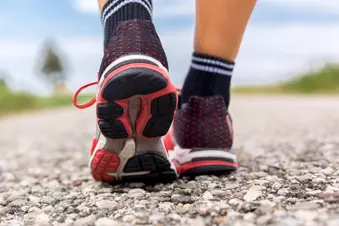
Because myasthenia gravis weakens your muscles so you tire easily, you may wonder if exercise is a smart idea. It’s possible for physical activity to make symptoms worse, but it’s still in your best interest to move your body regularly. The key is to pay attention to your body’s signals and exercise wisely.
Can Exercise Help Myasthenia Gravis?
It’s understandable you might not want to exercise with myasthenia gravis. But this raises your risk for other health problems, such as diabetes, obesity, and heart disease. So can some of the medications you may take for your condition, like glucocorticoids.
There are potential dangers when exercising with myasthenia gravis, but research suggests the benefits far outweigh these risks. In fact, when you promote heart and lung health, it helps your muscles get more of what they need to function well.
Because symptoms can change from day to day, it’s important to talk with your doctor about how and when to exercise. Together you can set up guidelines on how much exercise is healthy for you.
Tips for Smart Activity
Start slow. Go on daily short walks, either outside or on a treadmill. The goal isn’t lots of miles or a speedy pace. Simply moving your body on a regular basis will benefit your health. Even gentle yoga poses can increase your blood flow, help your heart, and reduce stress.
Stop falls. If you’re worried about muscle weakness raising your chance of tripping, try an elliptical machine, water aerobics, or a stationary bike. These options don’t require the same balance as walking or biking but still raise your heart rate and work out your muscles.
Listen to your body. Stop at the first sign your body isn’t handling things well. Don’t exercise if you’re feeling weak or overly tired. And don’t work out until you drop. Do enough to get moving and stop before you wear your muscles out.
Find a friend. Play it safe and let someone know when you’re working out. If you don’t have a buddy to do your activities with, make sure you have a phone on you in case you need help.
Break it up. Your body will likely do best with short sessions instead of long workouts. Rest as often as you need to and go as long as you feel good. Maintaining your health is a marathon, not a sprint. You can build up your session times as you gain endurance.
Focus on trunk muscles. Your proximal muscles are the ones closest to the trunk of your body. Doctors also call them “limb girdle” muscles. Exercises that strengthen these include stationary bicycling and elliptical exercise.
Pace yourself. Pay attention to when your energy levels are higher and try to fit your physical activity in then. But don’t overdo it -- if you go overboard on a day you feel good, you may create more soreness and fatigue the following days. Try to do something you enjoy that moves your body every day.
Focus on you. Everyone with myasthenia gravis is different. You may be able to do more than some people and less than others. Keep your goals specific to your body and needs.
Stay in communication with your doctor. If you start noticing more symptoms or just feel off while exercising, let your medical team know. They may recommend you check in with a physical therapist who can give you condition-specific exercises and set you up with a routine that works well for your limitations.
Show Sources
Photo Credit: Westend61 / Getty Images
SOURCES:
Journal of Sport and Human Performance: “Exercise and Myasthenia Gravis: A Review.”
Frontiers in Neurology: “Myasthenia Gravis and Physical Exercise: A Novel Paradigm.”
Myasthenia Gravis Foundation of Michigan: “The Benefits Of Exercise For Folks With MG.”
Johns Hopkins Medicine: “9 Benefits of Yoga.”
Conquer Myasthenia Gravis: “Exercise.”
Rush University Medical Center: “Living With Myasthenia Gravis.”